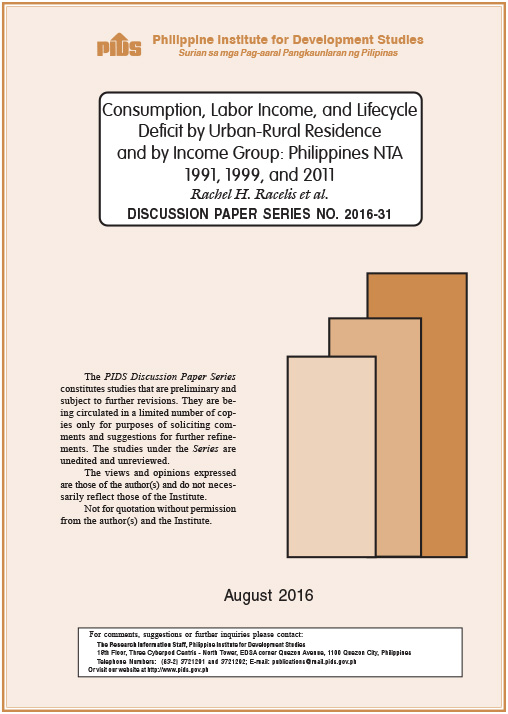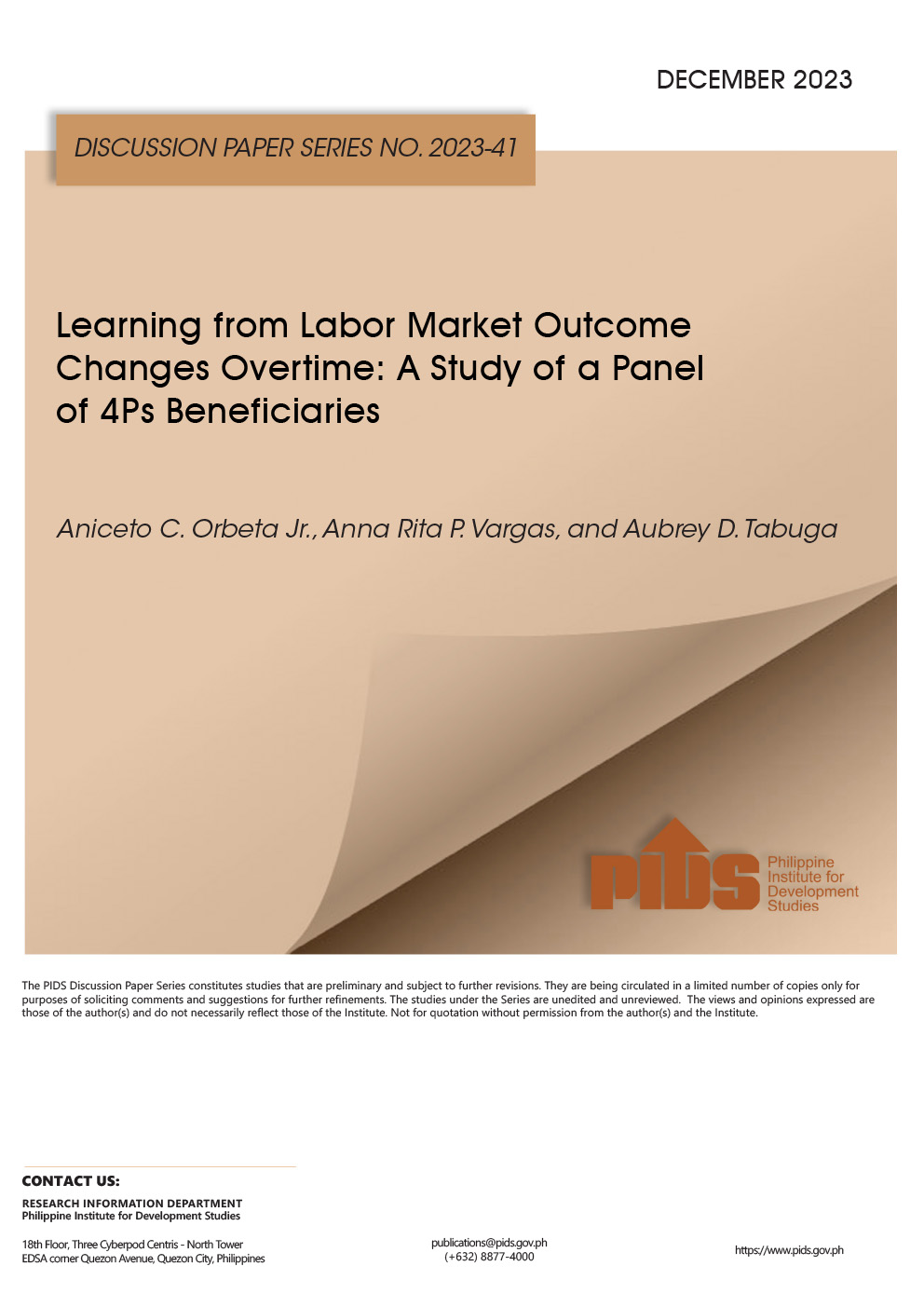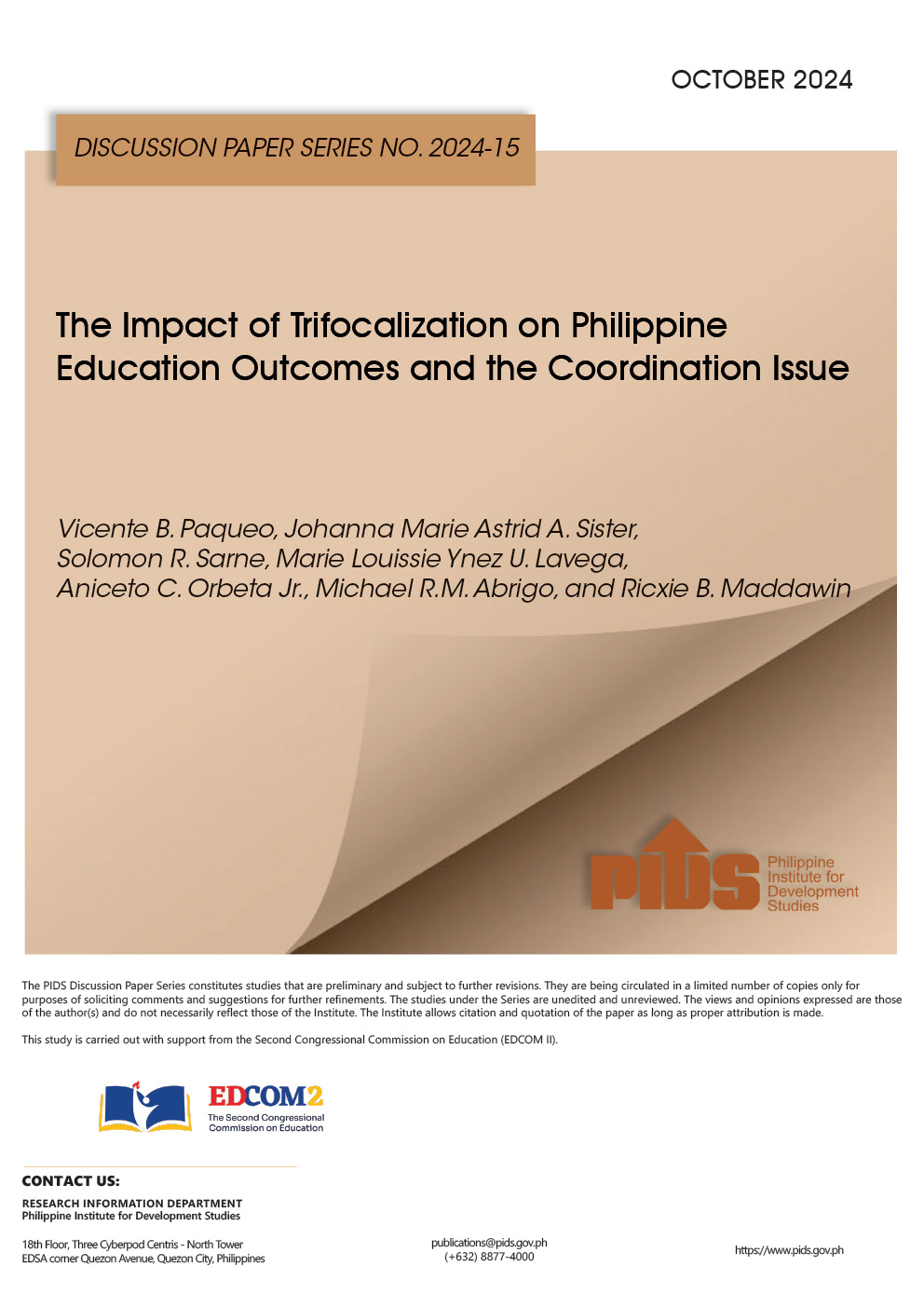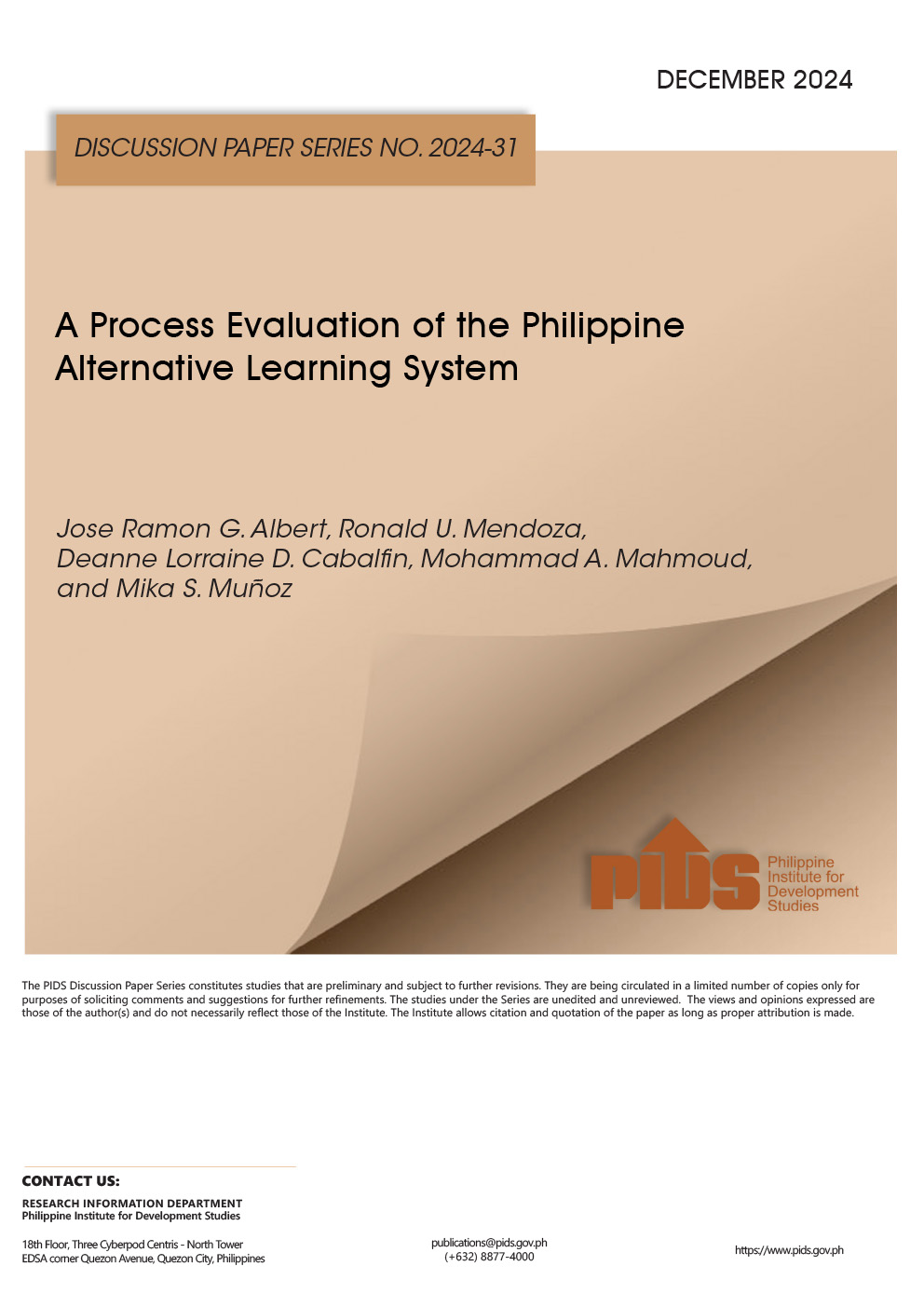Selected components of the NTA flow accounts were estimated for the Philippines for the years 1991, 1999, and 2011 by urban-rural residence and by income group. Three income groups are defined, referred to as income terciles, and thus estimates were produced for a total of six groups - three income groups for the urban areas and three income groups for the rural areas. This paper compares age profiles of consumption, labor income, and lifecycle deficit across the six groups for each of the reference years. The age profiles were generally found to have the expected shapes but they also showed interesting variations between groups.
Some findings that had generally been consistent in the three reference years include, among others, the following: (1) progressively lower per capita consumption and labor income at each age as one moves from the top, middle and to the bottom tercile in both urban and rural areas; (2) within terciles, urban area per capita labor income and consumption are higher at all ages than those in the rural areas; (3) in the rural bottom tercile, the young incur lifecycle deficit longest and the elderly incur lifecycle deficit earliest; (4) the spans of the surplus ages are shorter for the bottom and middle terciles compared to that for the top tercile in both urban and rural areas; (5) the elderly deficit age group accounts for increasing shares of aggregate lifecycle deficit moving from the bottom, middle and to the top income tercile in both urban and rural areas; and (6) the ratio of the aggregate surplus generated by the working age group to the aggregate lifecycle deficits of the young and elderly dependent populations is higher in urban compared to rural areas and lowest for the bottom terciles in both the urban and rural areas.













